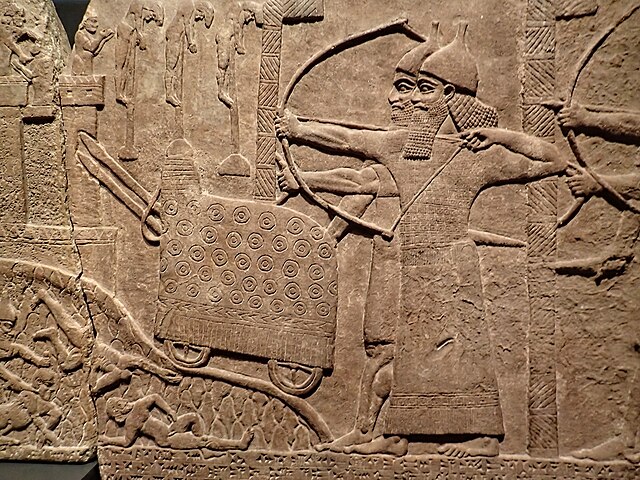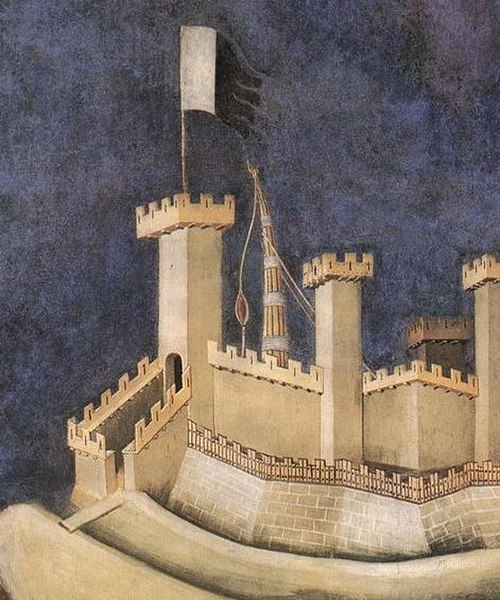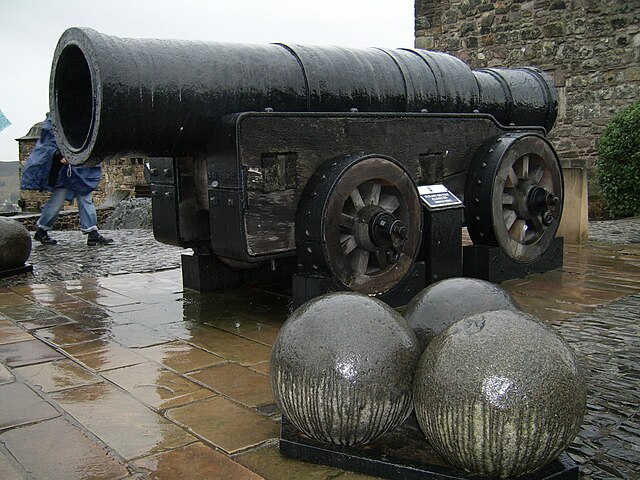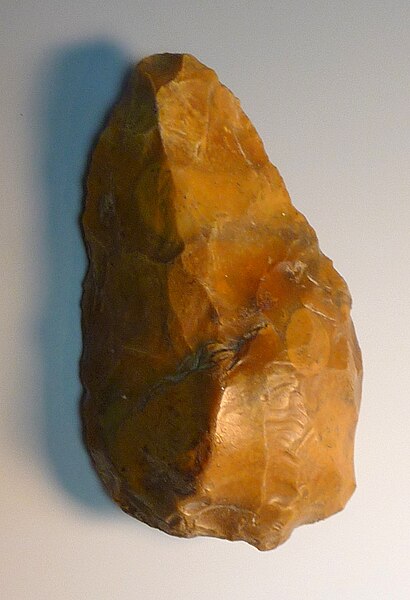A siege engine is a device that is designed to break or circumvent heavy castle doors, thick city walls and other fortifications in siege warfare. Some are immobile, constructed in place to attack enemy fortifications from a distance, while others have wheels to enable advancing up to the enemy fortification. There are many distinct types, such as siege towers that allow foot soldiers to scale walls and attack the defenders, battering rams that damage walls or gates, and large ranged weapons that attack from a distance by launching projectiles. Some complex siege engines were combinations of these types.
Replica battering ram at Château des Baux, France
Siege engine in Assyrian relief of attack on an enemy town during the reign of Tiglath-Pileser III 743-720 BC from his palace at Kalhu (Nimrud)
A stone-throwing machine set to defend a gate, in the fresco of Guidoriccio da Fogliano by Simone Martini (14th century).
The medieval Mons Meg with its 20" (50 cm) cannonballs
A machine is a physical system that uses power to apply forces and control movement to perform an action. The term is commonly applied to artificial devices, such as those employing engines or motors, but also to natural biological macromolecules, such as molecular machines. Machines can be driven by animals and people, by natural forces such as wind and water, and by chemical, thermal, or electrical power, and include a system of mechanisms that shape the actuator input to achieve a specific application of output forces and movement. They can also include computers and sensors that monitor performance and plan movement, often called mechanical systems.
A Honda F1 racecar engine
A flint hand axe was found in Winchester.
The Kinematics of Machinery (1876) has an illustration of a four-bar linkage.
Diesel engine, friction clutch and gear transmission of an automobile








